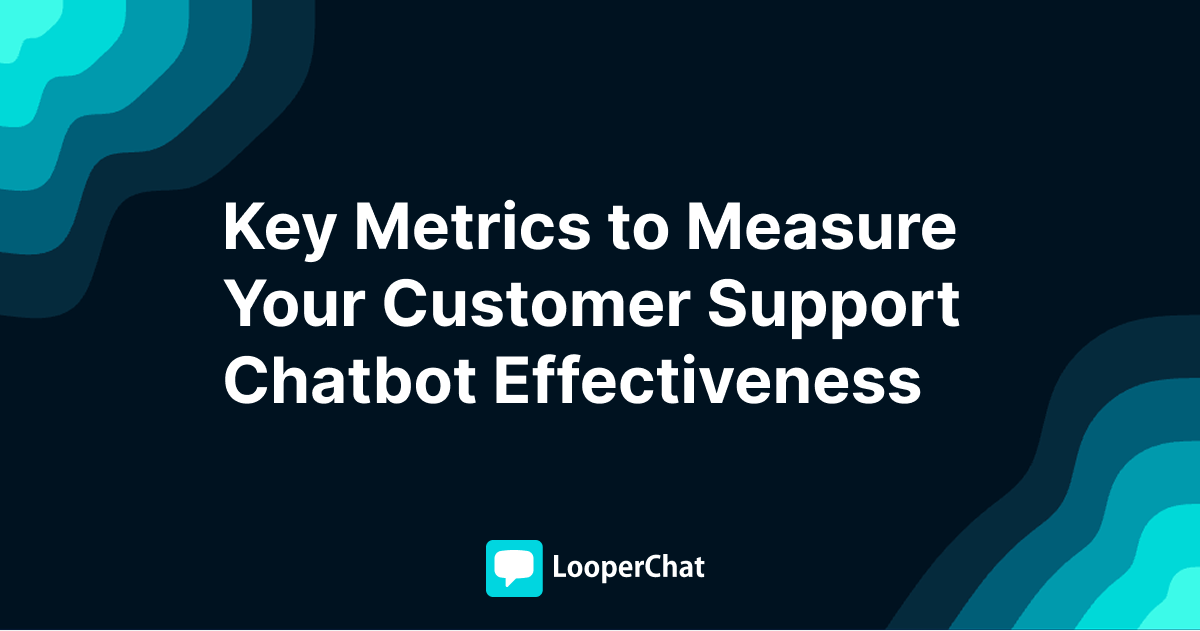Key Metrics to Measure Your Customer Support Chatbot Effectiveness
LooperChat Team

Customer support chatbots are more than automated responders. Done right, they become extensions of your team, resolving customer issues efficiently while enhancing satisfaction. To truly support your customers and lighten your team’s workload, you need to measure whether your chatbot is doing its job effectively. By tracking the right metrics, you can ensure it not only responds quickly, but also resolves issues, improves satisfaction, and drives real business outcomes.
Why measuring chatbot performance matters
A chatbot that doesn't deliver results is just taking up space on your website. Tracking the right metrics allows you to identify friction points, improve user experience, and ensure the bot is contributing to business goals like reducing support costs and increasing resolution speed.
Metrics that reveal real performance
When evaluating your support chatbot, consider metrics that go beyond surface-level activity counts:
-
Total Conversations: Measures the volume and demand trends. This helps you gauge how often your chatbot is used and what time periods see the highest activity.
-
Unique Users: Tracks how many different users interact with your chatbot. This metric helps you understand its reach and adoption rate across your audience.
-
Task Completion Rate: Measures how often users successfully achieve their intended goal, such as resolving an issue, making a booking, or retrieving account information. Low completion rates can signal confusion or dead ends in the chatbot flow that need redesign.
-
Handoff Rate to Human Agents: Tracks how often the chatbot needs to escalate conversations to a human agent. While seamless escalation is important, excessive handoffs may indicate that the bot is struggling with common queries, which increases the workload for your support team.
-
Average Response Time: Measures how quickly the chatbot responds to users. Since one of the main reasons users prefer chatbots is speed, tracking this metric helps ensure your chatbot meets expectations for instant support.
-
Customer Sentiment: Post-chat ratings or feedback prompts allow you to assess whether users find the chatbot helpful, friendly, and easy to use. This provides direct insights into user satisfaction.
Turning insights into improvements
Collecting these metrics is only step one. The real impact comes from continuous optimisation. Regularly review conversation transcripts to spot misunderstood intents, refine training data, and adjust flows to keep your support chatbot aligned with evolving customer needs.
If you’re using LooperChat, integrating analytics dashboards will give your team real-time visibility into these key performance areas, ensuring your bot remains a reliable and efficient support channel.
Summary
Your chatbot is a living tool. Treat it like any other team member by setting clear KPIs, reviewing performance regularly, and giving it the training it needs to succeed. In doing so, you'll build customer trust and keep your support operations running smoothly.